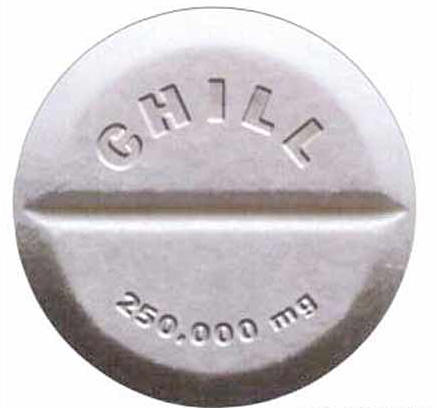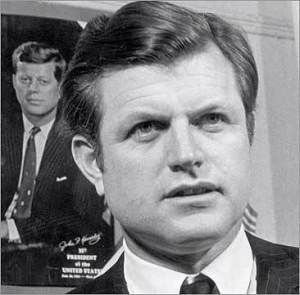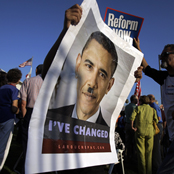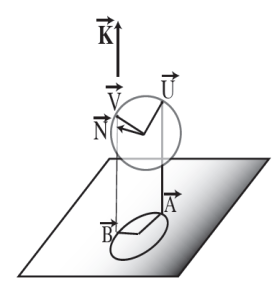You are currently browsing the monthly archive for August 2009.
Photographer James Griffioen is offering a breathtaking and poignant view of the changing urban landscape in Detroit. From Anne Trubek at GOOD:
For those of us trying to figure out how to understand these places in which we live, metaphors are important. Griffioen chooses “feral” wisely. Feral houses are no longer domesticated, having reverted to a different state, like horses in the west who roam free of any rider, stable, or whip. They have
transmuted into a different state of being, yes—but they do be. They are not, nor are their neighborhoods, as many like to call them, “dead.” (When Forbes published a list of the cities that have lost the most people this decade, they called them the “fastest-dying cities”—Cleveland and Detroit are on the list.) These cities, as Griffoen shows us, are teeming. Growth is everywhere.
Griffioen’s photography is beautiful to behold, but his pictures invoke more than aesthetic appreciation. What he is capturing here seems to be the opening up of the wilds of the world. He manages to capture something untamable. His images display the slow consumption of urbanity into the long-dormant but ever-hungry mouth of nature. Humanity may have left these structures empty and abandoned, but it seems the planet has found new uses for them.
Griffioen’s photography can be found here. I strongly recommend that anyone who feels completely separated from the natural world in their urban home check this out. Your disconnection won’t last long.
the placebo effect has long been a topic of study by both psychologists and pharmaceutical companies. For the  former, the placebo effect seems to represent the human brain’s unfathomable ability to heal the body without external help. For the latter, the placebo effect represents a major hurdle toward the development of new and profitable drugs. From Steve Silberman, courtesy of wired.com:
former, the placebo effect seems to represent the human brain’s unfathomable ability to heal the body without external help. For the latter, the placebo effect represents a major hurdle toward the development of new and profitable drugs. From Steve Silberman, courtesy of wired.com:
From 2001 to 2006, the percentage of new products cut from development [at Merck Pharmaceuticals] after Phase II clinical trials, when drugs are first tested against placebo, rose by 20 percent. The failure rate in more extensive Phase III trials increased by 11 percent, mainly due to surprisingly poor showings against placebo. Despite historic levels of industry investment in R&D, the US Food and Drug Administration approved only 19 first-of-their-kind remedies in 2007—the fewest since 1983—and just 24 in 2008. Half of all drugs that fail in late-stage trials drop out of the pipeline due to their inability to beat sugar pills.
The upshot is fewer new medicines available to ailing patients and more financial woes for the beleaguered pharmaceutical industry. Last November, a new type of gene therapy for Parkinson’s disease, championed by the Michael J. Fox Foundation, was abruptly withdrawn from Phase II trials after unexpectedly tanking against placebo. A stem-cell startup called Osiris Therapeutics got a drubbing on Wall Street in March, when it suspended trials of its pill for Crohn’s disease, an intestinal ailment, citing an “unusually high” response to placebo. Two days later, Eli Lilly broke off testing of a much-touted new drug for schizophrenia when volunteers showed double the expected level of placebo response.
This trend is not true just of newly developed drugs, either. Tests of the popular antidepressant Prozac have also showed an increase in potency of milk-based placebo drugs. One logical explanation for this would be that drug manufacturers are producing weaker drugs today than they did in decades past, perhaps as a reflection of rising costs in a slumping economy.
That, however, is not the case. Rather than producing weaker drugs, manufacturers say, the fact is that the placebo effect is actually growing more potent over time:
It’s not that the old meds are getting weaker, drug developers say. It’s as if the placebo effect is somehow getting stronger.
The fact that an increasing number of medications are unable to beat sugar pills has thrown the industry into crisis. The stakes could hardly be higher. In today’s economy, the fate of a long-established company can hang on the outcome of a handful of tests.
Why are inert pills suddenly overwhelming promising new drugs and established medicines alike?
The answer to this can be found not in the hard sciences but rather in sociology. Faced with the rising potency of placebo drugs seems to indicate that American attitudes toward pharmacology are changing. Where once the placebo effect was a tool of crafty physicians to ‘trick’ patients into getting better, it now seems that patients are doing all the tricking themselves.
America is a pill-popping nation. According to research done at the University of Texas at Austin, the average American spends around $25,000 annually on prescription medication alone. That does not include the nearly $14,000 they spend on over-the-counter remedies or the nearly $8,000 they spend on vitamin supplements and so-called alternative cures per year. On average, each American spends nearly $47,000 on medicines annually. To put this in some perspective, the median household income in America in 2007 was $50, 233.
In a climate where Americans are likely to spend so much on prescription drugs for relief, it makes sense that the average American expects a fix for every ailment. Medical science has advanced so that the question of a miracle cure is not if but when, and when presented with a pill for weight loss or migraines or tremors or dementia, it seems that the average American expects that the pill will work. So when that pill contains powdered milk, the human brain takes over and provides relief where none was provided before.
This says two important things about the future of medicine in America. One, it calls into question the relevance of the placebo test that is so heavily relied upon during Phase II and III drug trials today. If the predominant attitudes about medicine are that pills are panacea, then perhaps American bodies can’t be trusted any longer to test drugs.
The improvement in placebo potency also speaks to the power of the human brain, an organ largely built of fat and electricity that, when put to the test, can relieve pain and reverse disease symptoms. Perhaps future pharmaceutical R&D should be put toward the exploitation of this mystifying and uncharted curative power.
NOTE: I very much recommend reading the article from wired.com quoted above. Among other things, it discusses the history of the placebo effect. But even more interesting is a brief discussion of how pharmaceutical companies can help along the brain’s restorative powers. For example, did you know that yellow sugar pills are most effective as antidepressants (“like little doses of pharmaceutical sunshine”) and green placebo pills are effective anti-anxiety medications?
From boingboing.net:
Two trolls on ham radio, one identified as “G-K,” the other as “Robert” or “R-J” overheard accidentally on August 29, 2009, while searching for first responder frequencies during the August 2009 Los Angeles wildfires. The two men argued with each other about various technical subjects of interest to ham ops, then discussed drugs and past jail time, then notes on an Andy Griffith show marathon, then torture they’d like to perform on each other in great detail because they hate each other so much. Stay with it.
The audio of the exchange is embedded on the site here. Are these the lunatic rantings of two social outcasts or a powerful commentary on the zeitgeist of our generation? Perhaps both? You decide.
 The elder statesman and the last surviving member of America’s original royal family died last night at the age of 77. Kennedy held his Senate seat for more than forty years, during which time he defended civil rights for all, increased the minimum wage, made access to health care easier for the poor, and funded Meals on Wheels. His other successes include reducing the voting age from 21 to 18, and Title IX, which gave women’s athletics much better funding. Long believed to be the anchor of liberal politics in Washington, Kennedy was nevertheless considered to be a champion of bipartisanship. He died as the result of a long and widely publicized battle with brain cancer. Earlier this month, he mourned the loss of his sister and only living sibling, Eunice Kennedy Shriver.
The elder statesman and the last surviving member of America’s original royal family died last night at the age of 77. Kennedy held his Senate seat for more than forty years, during which time he defended civil rights for all, increased the minimum wage, made access to health care easier for the poor, and funded Meals on Wheels. His other successes include reducing the voting age from 21 to 18, and Title IX, which gave women’s athletics much better funding. Long believed to be the anchor of liberal politics in Washington, Kennedy was nevertheless considered to be a champion of bipartisanship. He died as the result of a long and widely publicized battle with brain cancer. Earlier this month, he mourned the loss of his sister and only living sibling, Eunice Kennedy Shriver.
 Remember when the GOP chastised the left for calling Dubya and Cheney war criminals and deemed it “un-America” to question the wisdom of our (right-wing) leaders? Remember when it was considered hateful and treasonous to wish failure upon our president? Well, times have evidently changed, as the seething debate over health care reform continues to be waged in and out of town hall meetings. Max Blumenthal at The Daily Beast has traced the origins of the latest and most heinous debate tactic yet; the comparison of President Obama to history’s most reviled man, Adolf Hitler. And he has traced it back to longtime nutjob and political hate-monger Lyndon LaRouche:
Remember when the GOP chastised the left for calling Dubya and Cheney war criminals and deemed it “un-America” to question the wisdom of our (right-wing) leaders? Remember when it was considered hateful and treasonous to wish failure upon our president? Well, times have evidently changed, as the seething debate over health care reform continues to be waged in and out of town hall meetings. Max Blumenthal at The Daily Beast has traced the origins of the latest and most heinous debate tactic yet; the comparison of President Obama to history’s most reviled man, Adolf Hitler. And he has traced it back to longtime nutjob and political hate-monger Lyndon LaRouche:
According to Jeff Steinberg, a longtime LaRouche cadre who edits the movement’s political journal, Executive Intelligence Review, top LaRouche advisors decided during the congressional debate over the stimulus package to liken Obama’s policies to those of Hitler.
“We went after this thing five months ago and put everything out publicly through our magazine and web sites and decided to make a very harsh and shocking point,” Steinberg told me. “It is our view that there’s a lot of people who for pragmatic reasons could be inclined to accept policies that could take us down that slippery slope to Hitler’s policies in 1939.”
Comparing an American president– especially one charged with cleaning up the messes of a much less capable predecessor– to Adolf Hitler sounds to the rational mind to be both offensive and absurd. It is more telling of the heckler than the hecklee that such a comparison would be drawn. But is this the weapon of the crazies who stockpile weapons and racist literature in their bunkers waiting for the second coming of Christ?
Apparently, yes:
When opposition to Obama’s health-care reform proposals intensified this August, mainstream Republican figures began echoing LaRouche’s paranoid warnings. Former Alaska Governor Sarah Palin, former House Majority Leader Newt Gingrich and Senator Charles Grassley insisted that Obama’s health-care plan would mandate the creation of “death panels” to determine which Americans would be euthanized. Rush Limbaugh weighed in by comparing Obama to Hitler, who, he said, “also ruled by dictate.”
Palin, Gingrich, Grassley, and Limbaugh: all followers of LaRouche? It is a frightening day when the “mainstream Republican figures” of the nation begin taking their cue from a paranoiac and an attention whore like Lyndon LaRouche. Now more than ever, Americans need to remember that, like him or hate him, the American president deserves at least the respect and attention of his people. And after the last eight years, if America was willing to trust George W. Bush and Dick Cheney, they can at least try to trust Barack Obama.
Next time you have a decision to make with someone, offer to settle it with the flip of a coin. That way, you can almost guarantee  yourself to be the victor. This seems to go against one of the fundamental principles of statistics, that a coin-toss will always produce fifty-fifty odds of landing on either given side. But a study on the physics of the coin-toss reveals some interesting– and useful– flaws in this logic. From James Devlin at codingthewheel.com:
yourself to be the victor. This seems to go against one of the fundamental principles of statistics, that a coin-toss will always produce fifty-fifty odds of landing on either given side. But a study on the physics of the coin-toss reveals some interesting– and useful– flaws in this logic. From James Devlin at codingthewheel.com:
The 50-50 proposition is actually more of a 51-49 proposition, if not worse. The sacred coin flip exhibits (at minimum) a whopping 1% bias, and possibly much more. 1% may not sound like a lot, but it’s more than the typical casino edge in a game of blackjack or slots. What’s more, you can take advantage of this little-known fact to give yourself an edge in all future coin-flip battles.
That 1% may not sound like much, but it undermines the previously stated principle that the coin-toss is an inherently fair game of chance. Reading this, you may believe that this 1% is due to physical imperfections on the coin itself, dings and scratches and nicks, or due to residue buildup from years of handling, or you may assume that it has to do with the unequal amount of metal used to make up the different designs on the heads and tails side of the coin. But according to the research, these factors play a negligible part in the physics of the coin-toss. What matters most is the toss, not the coin:
A good way of thinking about this is by looking at the ratio of odd numbers to even numbers when you start counting from 1.
1 2 3 4 5 6 7 8 9 10 11 12 13 14 15 …
No matter how long you count, you’ll find that at any given point, one of two things will be true:
- You’ve touched more odd numbers than even numbers
- You’ve touched an equal amount of odd numbers and even numbers
What will never happen, is this:
- You’ve touched more even numbers than odd numbers.
Similarly, consider a coin, launched in the “heads” position, flipping heads over tails through the ether:
H T H T H T H T H T H T H T H T H T H T …
In other words, knowing where the coin starts out gives you a slight advantage in knowing where it will end up. The full and physics-laden report on the science of the coin-toss, Dynamical Bias in the Coin Toss, is available here, but the results can be boiled down to one general idea; that the outcome of a fair coin-toss can be predicted correctly not just by luck but by strategy. Indeed, the authors of the report were able to use their research to construct a coin-tossing machine that produced an outcome of heads 100% of the time.
The lesson to be learned from this is that even just a 1% bias can create room for strategy in an otherwise fair and statistically balanced proposition. So has physics trumped statistics in this case? All of this is research is academically interesting, but as for real-world applications, coin-tosses are still fair and reasonable ways of deciding who pays for lunch. But next time someone offers to settle a disagreement over a coin-toss, try to keep in mind the scientific premises put forth in this paper:
Here are the broad strokes of their research:
- If the coin is tossed and caught, it has about a 51% chance of landing on the same face it was launched. (If it starts out as heads, there’s a 51% chance it will end as heads).
- If the coin is spun, rather than tossed, it can have a much-larger-than-50% chance of ending with the heavier side down. Spun coins can exhibit “huge bias” (some spun coins will fall tails-up 80% of the time).
- If the coin is tossed and allowed to clatter to the floor, this probably adds randomness.
- If the coin is tossed and allowed to clatter to the floor where it spins, as will sometimes happen, the above spinning bias probably comes into play.
- A coin will land on its edge around 1 in 6000 throws, creating a flipistic singularity.
- The same initial coin-flipping conditions produce the same coin flip result. That is, there’s a certain amount of determinism to the coin flip.
- A more robust coin toss (more revolutions) decreases the bias.
In fact, the next time you have a debate to settle, print out and recite all 31 pages of Dynamical Bias in the Coin Toss and, if your friends are anything like me, they’ll offer to pay for lunch just to shut you up. In this way, at least, you can use the physics of the coin-toss to virtually guarantee your victory.
